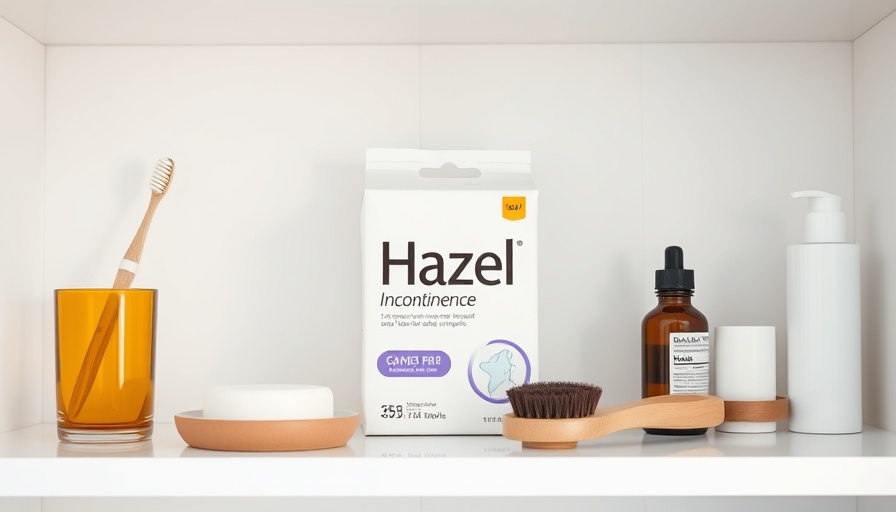
Hazel: A New Era in Incontinence Products
Incontinence is a topic often surrounded by stigma, but Hazel, a modern brand, is breaking those barriers with the launch of premium disposable absorbent briefs at over 300 Target stores. With an impressive 681% increase in retail distribution over the past year, Hazel is emerging as a leader in a space that traditionally lacks innovation.
Understanding the Target Audience
The brand knows its customers well—women aged approximately 40 years old who are likely navigating perimenopause or menopause. Co-founder Aubrey Hubbell highlights that Target was always a goal for Hazel because it's a shopping hub for their demographic, including high-income millennial moms. The focus on this age group is significant, especially as incontinence products become relevant for more consumers.
Why Design Matters: Aesthetic Appeal
Unlike typical incontinence products that often feature dull colors and cumbersome packaging, Hazel's briefs are encased in bright cardboard packaging with earthy shades of burnt orange. This design choice not only appeals visually but also helps to destigmatize incontinence. As Hubbell shares, “Color was something I got really excited about with the name Hazel.” The modern aesthetic aims to make incontinence products feel less clinical and more relatable. The hope is to reflect personal style, much like the underwear drawer—a sentiment that resonates with many women.
Product Innovation: What Sets Hazel Apart?
Hazel's disposable briefs come with a patent-pending design that adeptly disperses liquid into an absorbent core, capable of handling up to 1.5 cups. Priced at $16.99 for a 12-count box, these briefs are positioned as a premium product compared to alternatives like Always Discreet. Hubbell emphasizes that women prefer disposable items, saying, "97% of women prefer incontinence products that can be tossed," which justifies both the price point and the convenience factor.
Market Shift and Consumer Behavior
The pivot from direct-to-consumer to retail has been strategic for Hazel. The company’s sales model has shifted to 80% wholesale, indicating a growing trend where consumers prefer purchasing incontinence products in person rather than online. Starting with Meijer, where the brand gathered critical market data, helped Hazel establish its presence before trying its luck with a retailer like Target.
Looking to the Future: Expanding Horizons
With plans to diversify color options and potential new product lines to address other female health needs, Hazel is on a growth trajectory. The brand is taking steps to cement its place in the personal care market aimed specifically at the needs of women as they age. Notably, the existing focus on postpartum and pregnancy-related incontinence could broaden the customer base even further.
Conclusion: Embracing Change in Personal Care
Hazel is redefining what it means to care for oneself in sensitive stages of life. Its forward-thinking approach is not only making incontinence products more accessible and appealing to a broader audience but is also gradually destigmatizing an important aspect of women's health. For those who may be hesitant to seek better options, Hazel presents a compelling case for embracing change.
 Add Row
Add Row  Add
Add 




Write A Comment